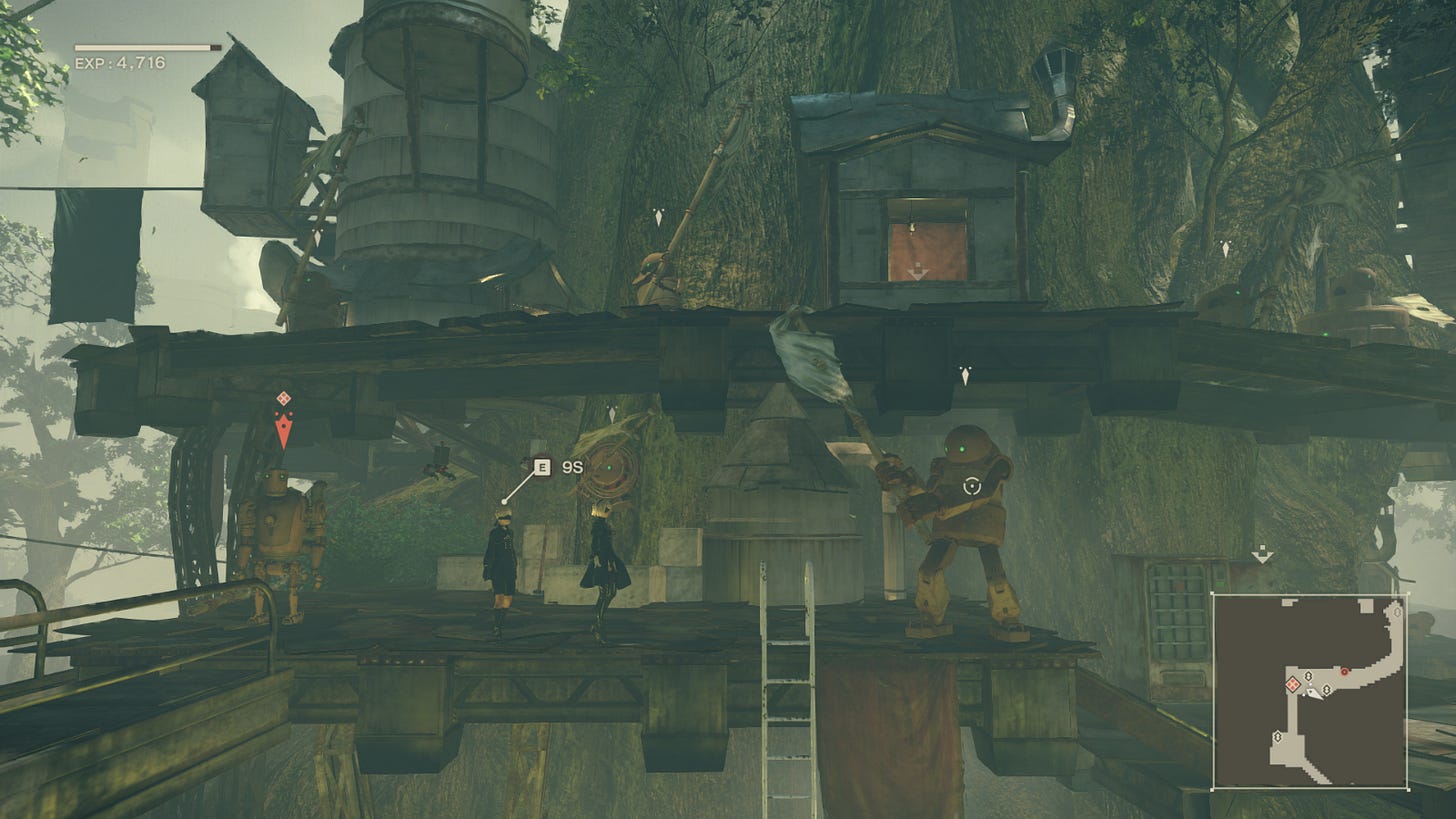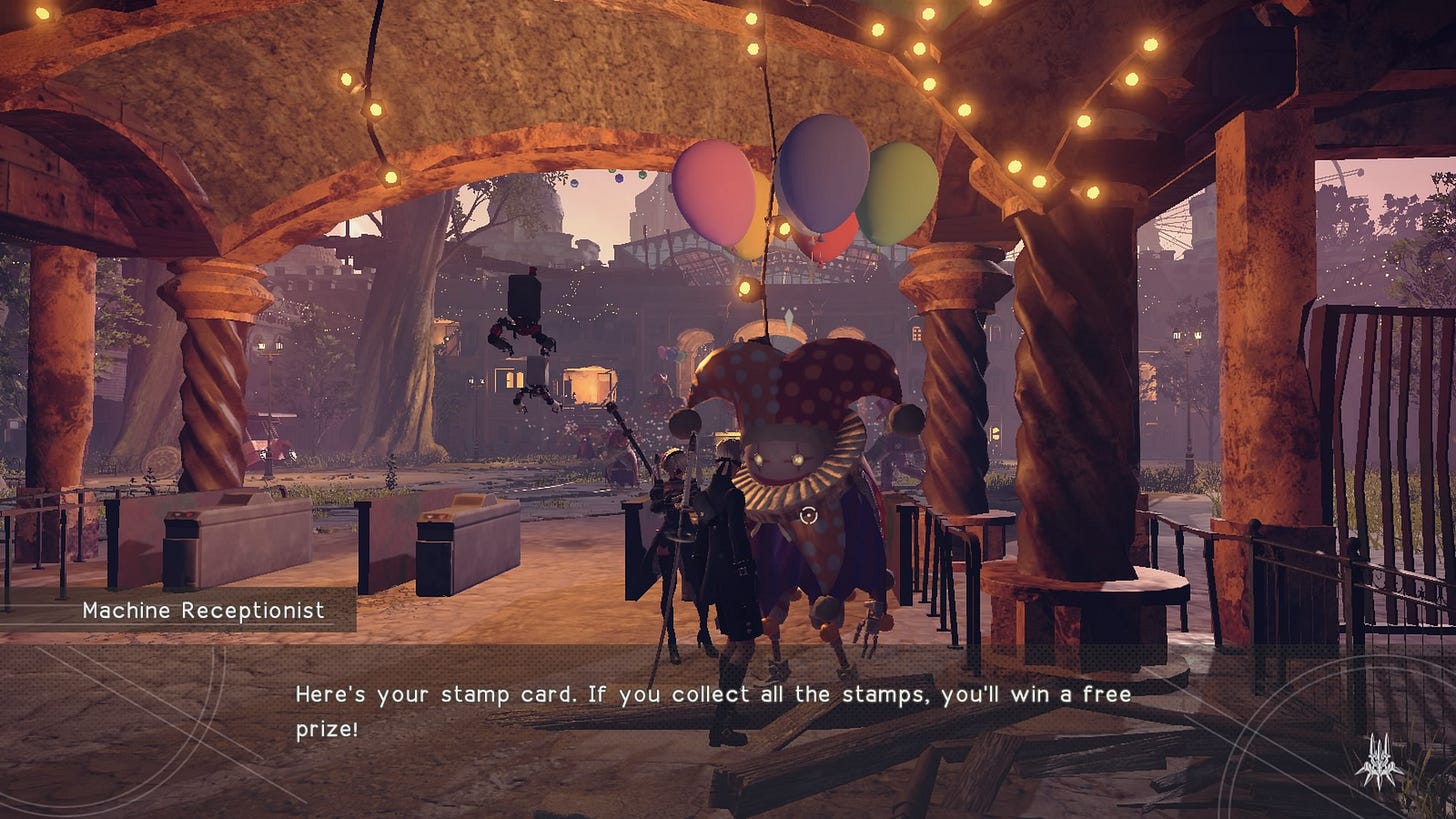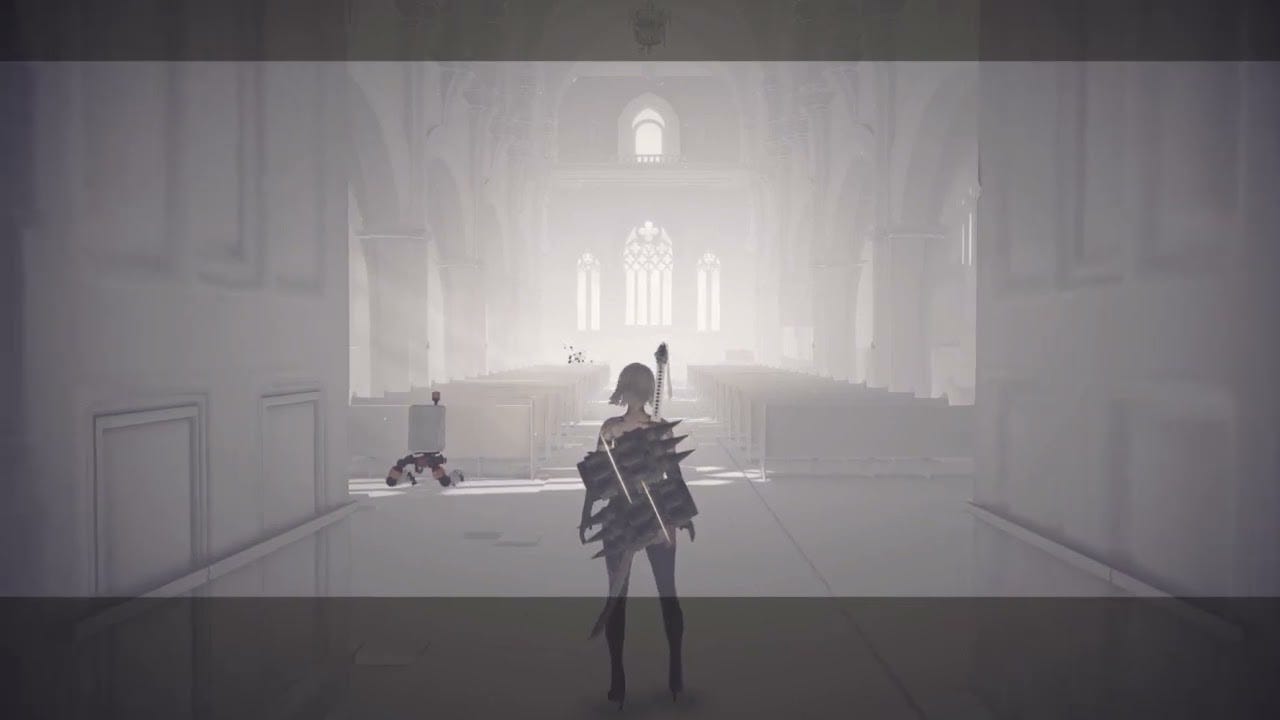2B Or Not 2B
Nier Automata on Being Human
Last weekend, I attended the NieR:Orchestra Concert re:12024 [ the end of data ] in Tokyo, where parts of the soundtracks for Nier: Automata as well as Nier Gestalt & Replicant1 were performed by an orchestra, choir, and the original vocalists.
I started playing Nier: Automata in 2023, around the time I moved to Japan. It’s an action RPG with bullet hell elements about human-created androids fighting against alien-created machines in the ruins of civilisation on Earth, thousands of years into the future. We’re ostensibly fighting for humanity but there are no humans to be found which creates curiosity around what has happened in those centuries.
Over the course of the game, we travel to different regions inhabited by different groups of machines.
Some have built a village in the woods and are trying to live together in peace. They’ve broken through their programming to fight and kill androids, their natural enemy. Instead they have formed ties of friendship and even family, calling each other sister, brother, father, mother.
Other machines have moved into and revived an old amusement park, dancing and celebrating there at all times. The landscape and cutscenes in that amusement park, its spires backlit by the dusk sky and never-ending fireworks, are among the most striking in the game. Every time I see the machines twirl about and throw confetti in the air, it fills me with the strangest feeling. Are they actually having fun? Or just trying to imitate humans having fun? We know as well as the android main characters that machines are not supposed to have emotions, yet we keep running into machines displaying joy, sadness, worry, love.
As we keep exploring the amusement park, the images we encounter are touching but also heart-wrenching. We want the machines to be happy, yet we’re not sure if they can be. They’re still machines, aren’t they?
Are machines so different from humans though? In the game, they’re called not just machines but machine lifeforms2, suggesting that they are somehow alive too. Even if they’re just pretending to have fun, isn’t that something we humans do as well? Places like amusement parks are designed to elicit emotions of joy in their visitors, whether human or machine.
Humans trying their best to have fun might appear stiff and awkward at times, just as those machines twirling and throwing confetti with stiff and jerky movements. It’s their sincere effort and struggle to transcend their programmed nature that moves us. This leads me to ask once again: Are we so different? And in light of this, what does it even mean to be human?
Is humanity something we are born to be and can’t escape? Or could it be something we strive to find and embody every day?
Consequently, is the right to be called human something we have to earn? And if yes, how do we do that? Concepts like “humanitarianism” suggest that altruism and kindness towards others might be connected to our notion of “being human”. Does acting kind and generous make us human then? I don’t claim to be able to lead this philosophical argument to a satisfying conclusion so I’ll leave the question for you to ponder for yourself or in the comments.
Nier: Automata is designed to be played through more than once and has 26 endings. The concert, too, told a unique story over the course of its setlist through video and narrative spoken by the two main characters, 2B and 9S, interwoven with the music.
Starting out on a mission to exterminate all machines on Earth, 2B and 9S gradually come to travel not to fulfil that mission but to explore what it means to live in a dystopian, war-torn environment. As androids, they carry so-called black boxes, artificial cores that store their memories and are equipped with a self-destruct function. Any android who self-destructs on Earth can be uploaded into a new body, identical to the old one, if their data has been transmitted and saved at the Bunker, an orbital space station, before the function is triggered. However, after the Bunker is destroyed, 2B and 9S are stranded on Earth.
During their travels, 2B’s black box is infected with a slow but terminal virus. After failing to find a cure, she and 9S reach a white cathedral3 that serves as graveyard for fallen YoRHa soldiers. When 2B is about to die, the black box shards of the dead androids combine and create a new black box for her. Overjoyed and filled with new hope, she and 9S continue their journey—not to save the world but simply to lift the “curse” that binds YoRHa androids to war and to find a new way of living4.
Even though they are androids, we empathise with their quest. Perhaps the answer to the question “What does it mean to be human?” is hidden somewhere in there too.
Whatever may wait for 2B and 9S, their story inspires us to love, to dream, and to go on together even in the darkest times at the end of the world, when a happy ending seems impossible.
The original game, developed by Cavia and released by Square Enix in 2010, was called just Nier. The Japanese PlayStation 3 version with a younger main character was called Nier Replicant and yet another version for Xbox 360 with an older main character was called Nier Gestalt but released outside of Japan as Nier for both platforms. If you’re confused, don’t bother.
機械生命体 kikaiseimeitai in the original Japanese
Could it be a nod to the famous church mod of 2022?
At least I believe that’s what the last lines said… After staring at small characters on a faraway screen for over two hours, my vision got a little hazy and my eyes were burning. If you were there and have a better understanding, please let me know!



